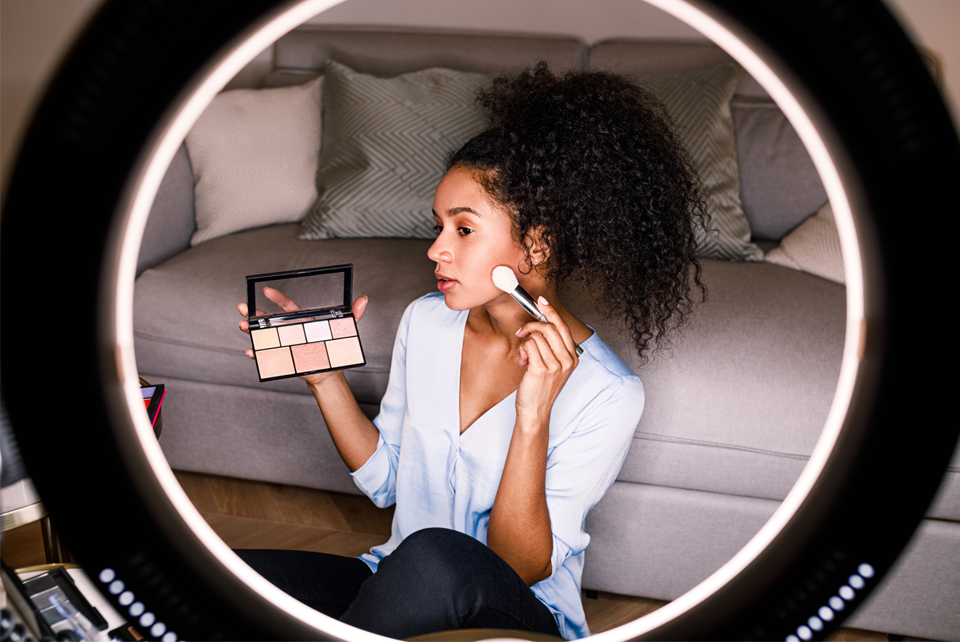In the summer of 2020, model and make-up artist, Sasha Louise Pallari started a movement to see more “real skin” on social media. Sasha, using the hashtag #filterdrop, encouraged influencers and brands to drop filters and to promote women sharing authentic selfies.
Reacting to the campaign in Feb 2020, the ASA (Advertising Standards Agency) examined complaints against two British influencers. The influencers had posted photos and videos purporting to show the impressive results of tanning lotions.
In both cases it was ruled that the ads were likely to have misled consumers and the ads were banned. Furthermore, the watchdog said filters should not be applied to social media adverts if they exaggerate the effect of the product.
This led to new guidance for influencers on the use of filters when advertising beauty products.
The #filterdrop movement has certainly been a giant leap in the right direction. Yet, there are certain questions still left unanswered.

Sasha Pallari – photographed without filter (left) compared to using the ‘Paris’ filter (right).
Has the ruling done enough?
The ruling doesn’t mean filters in advertising are banned altogether. Rather that the re-touching of photographic images “requires particular attention to avoid misleading consumers, and visual claims should not misleadingly exaggerate the effect the product is capable of achieving”. Creativity is fine it seems, as long as the image doesn’t mislead the consumer.
Where is the line between creativity and misleading exaggeration? Filters brighten, smooth, tweak and hide inconsistencies. Which means they mask the true results of the very beauty product intended to solve those exact inconsistencies. How can a consumer trust the advertising, when we’re not seeing the real result?
Why just influencers?
The next question for me is why influencers are being held to standards that other forms of advertising are not? We are constantly being sold mascara with models/celebrity ambassadors wearing false eyelashes. Why is digital enhancement different? The main reason seems to be simple. Influencers are like peers, whereas models/celebrities are not and therefore not held to the same standards of realism.
Let’s hope that the playing field is levelled sooner rather than later.

Sasha Pallari - A photograph of Sasha without filter is seen side-by-side with an adapted version that has had a 'cats eyes' filter added.
Influencers and your business
If you are considering incorporating brand ambassadors or influencers into your marketing strategy, we would recommend carrying out due diligence on their profile. Do their values align to your brand values? Which other brands (if any) are they representing? What does a typical follower look like and is this a good fit with your target audience? A high follower count shouldn’t always be put at the top of your criteria list when selecting a brand ambassador. Authenticity must sit at the heart of any influencer campaign. Therefore, it is important to question their use of filters, language, alliances, and other image or video enhancing tools. It would be a good idea to add a clause about filter use in a contract when working with influencers and ensure that this tallies with the latest rulings. It’s worth remembering, that if you do alter your content, you should expect followers to be a little more hesitant of your recommendations.
Brands champion real advertising
There are some beauty brands who are actively embracing real beauty as part of their advertising campaigns:
Dove - Their beauty pledge has 3 vows - 1. The brand will always feature real women, never models (with diverse ages, sizes, and ethnicities in mind); 2. The brand portrays women as they are in real life (there is zero digital distortion of women and every image is approved by the women featured); 3. The brand funds the Dove Self-Esteem Project, a community of mentors, teachers, and educators that help young girls bolster confidence.
Olay - In February 2020, Olay announced it is officially committed to “zero skin retouching” in all of its advertising materials, including content created by Olay’s influencer partners.
SPKTRM Beauty - Founded in 2018 SPKTRM is the first beauty brand to ban model retouching entirely. Its mission: to throw all unrealistic beauty standards and limitations out the window.
The list of brands dropping filters and retouching in their brand content continues to grow. Let’s hope it’s the future.
A moral issue
In 2020, the online world became the default for many of us. Most of our human interaction now takes place on social media. Younger generations in particular, have only known a life online.
No one should face the expectations of constant perfection.
If users and brands can lead the charge with the support of the ASA, then hopefully we are the beginning of positive changes.
Are you considering an influencer strategy for your brand? Contact our team to see how we can help.
